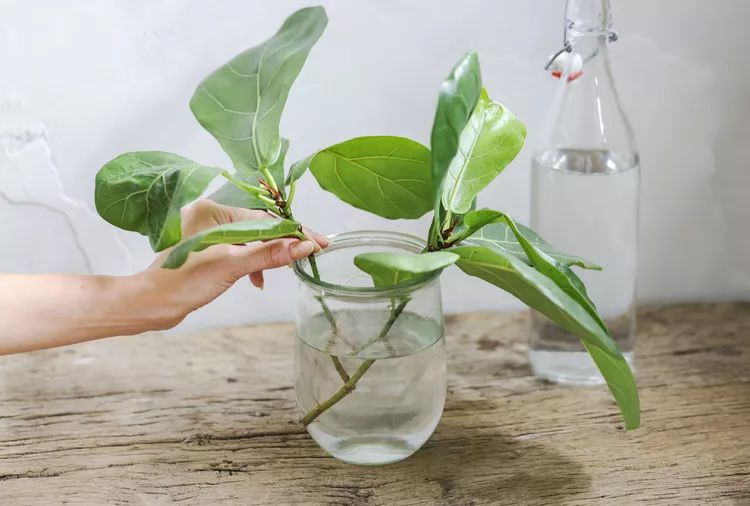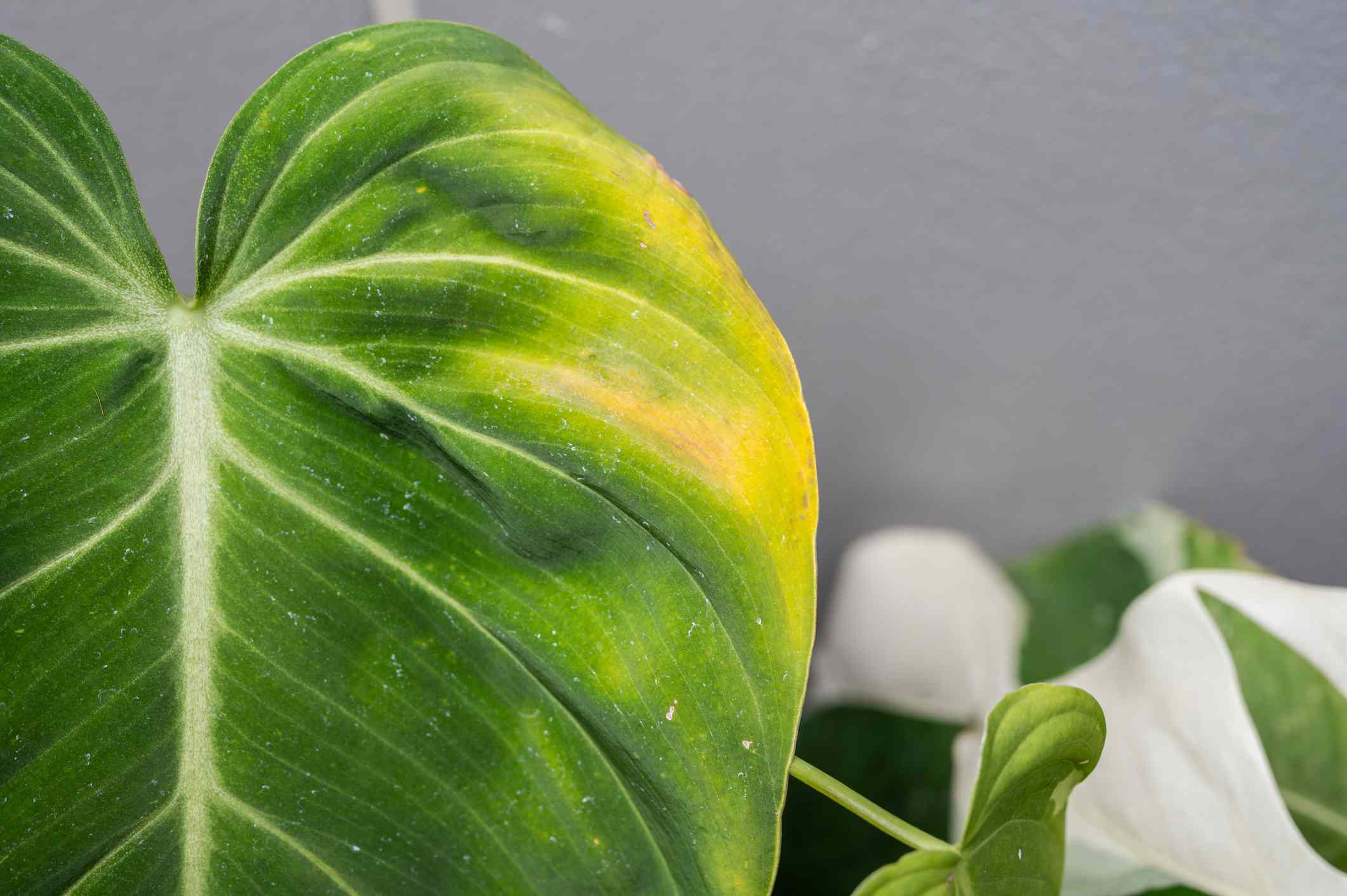Water propagation is a fun and simple way to grow new plants at home. Watching new roots grow in the water is one of the biggest advantages of this method over other methods like soil propagation. However, if you’re struggling to make water propagation work, you’re not alone. While the process may be simple, there are a few common mistakes that can cause the whole process to be ineffective.
Here are 12 common water propagation mistakes you may be making and how to correct them.
Propagating Everything in Water
Not all plants are well-suited to water propagation. Some plants will root far more quickly in soil or by other methods, such as air layering. For example, while pothos, vining philodendrons, monsteras, and alocasias root easily in water, snake plants, zz plants, and rarer cultivators propagate better in sphagnum moss or soil. Before you start propagating your plant, it’s essential to research which type of propagation will work best.
Want more gardening tips? Sign up for our free gardening newsletter for our best-growing tips, troubleshooting hacks, and more!
Missing the Nodes
The Spruce / Cori Sears
Nodes are the areas along a plant’s stem where leaves and roots grow, usually identified by a small bump or notch. Certain plants will not grow new roots from anywhere except the nodes, so if you place a cutting in the water without any nodes submerged, it will just rot and eventually die. However, some plants will root from any area of the stem, not just the nodes. Ensure health and growth by researching how your plant grows its roots from propagation.
All stem cuttings should have at least one leaf left at the top that is not submerged in water. Any foliage that touches the water will rot, contaminating the water and killing the roots.
Choosing the Wrong Time
Propagating at the right time of year is essential to successful propagation, whether you are working with houseplants or plants from the garden. It’s essential to propagate your plants during their active growing season, usually in the spring and summer. It’s always a good idea to research your plant’s growing season(s) and ideal propagation times before you start.
Using the Wrong Container
One of the best parts of water propagation is watching new roots grow through the glass walls of the container. However, you don’t technically have to use a glass vessel if you don’t want to. What is crucial is that you choose an optimally sized container that holds your cutting(s) in the right place.
For example, a container that is too wide and shallow may not hold a stem cutting in the correct position, resulting in the leaves dipping down into the water or the nodes at the bottom of the stem hitting air if the cutting falls. Generally, small jars or thin vases are best, but—like with most aspects of propagation—it depends on the plant.
Placing Cuttings in Low Light
The Spruce / Adelyn Duchala
Water isn’t the only thing that your stem cuttings need to root. They also need sufficient light, so don’t set them in a dark corner and forget about them. Most cuttings do best with medium to bright indirect light while rooting, so aim to keep them within a few feet of a bright window.
Placing Cuttings in Direct Sun
At the same time, stem cuttings can’t tolerate direct sunlight while rooting—regardless of the type of plant. Even hardy, sun-loving succulents will struggle in direct sunlight while rooting in water. So, avoid placing your stem cuttings in direct sunlight, especially outside. Instead, aim for a warm spot that receives indirect or dappled light.
Not Changing the Water
Water propagation may be simple, but it’s not a set-it-and-forget-it kind of deal. You still need to stay on top of a few things during the process, namely changing/refreshing the water on a regular basis.
Ideally, the water should be changed once a week, but simply topping up the water levels will also do. This helps combat the natural evaporation process and replenishes the water’s oxygen and nutrients.
Adding Fertilizer to the Water
Giving your cuttings some extra nutrients may seem like a good idea, but adding fertilizer to the water while propagating is a definite no-no. First, it’s completely unnecessary since the plants don’t have a root system to absorb the nutrients in the first place. Second, it can potentially burn the delicate new roots or cause algae growth and rot in the water.
Ultimately, unless you’re growing your plants in water long-term, they will not need any extra nutrients during this brief propagation period. For plants growing in water permanently, fertilizers designed for hydroponic growing are the way to go.
Missing Signs of Rot
Rot can happen quickly, so it’s important to catch it early. Early signs of rot include fuzzy or goopy-looking matter around the bottom of the cutting or darkened areas of the stem.
Caught fast enough, you can usually save a cutting from rot by simply cutting away the affected pieces and changing the water. Cuttings that begin to rot are usually an indication that something is wrong with the growing environment. Take stock of what the issue could be so you can try to prevent it from happening again.
Transplanting Too Early
The Spruce / Adelyn Duchala
Just because you see roots starting doesn’t mean your cutting is ready to transplant. Ideally, you should wait until the roots are about an inch long before you attempt to move the cutting back to soil. Depending on the plant, this can take anywhere from a couple of weeks to a few months. Cuttings that are transplanted too early are at higher risk of dying since their new roots aren’t well-established yet.
Waiting Too Long to Transplant
On the other hand, waiting too long to transplant your cutting back to soil can also spell disaster. While some plants, like pothos, can grow in water long-term, most plants need soil. Leaving cuttings in water well after they are ready to be transplanted can lead to root rot, which is difficult to recover from. Generally, aim to transplant your cuttings once the roots at least an inch long and no longer than two inches.
Not Watering Enough After Transplanting
Perhaps one of the most common mistakes with water propagation occurs once the plant is back in the soil: not watering enough after transplanting. The roots that grow while the cutting is in water are called water roots. Put simply, these roots developed in water conditions and are not acclimatized to growing in soil yet.
Keeping the soil consistently moist for the first couple of weeks after transplanting is essential to successfully transition from water to soil—regardless of the type of plant.
FAQ
-
There can be several reasons that a cutting isn’t rooting in water, but the most common are that your plant prefers another method of propagation, you missed putting a node in the water, or your cutting doesn’t have enough light.
-
Whether cuttings root faster in water or soil depends on the plant. Always research the best propagation method for the plant you’re working with before you begin.
-
Adding vinegar to the water will not help your plants root faster. In fact, it could kill them. While apple cider vinegar rooting hormone is a popular at-home recipe, it’s designed for soil propagation, not water.





